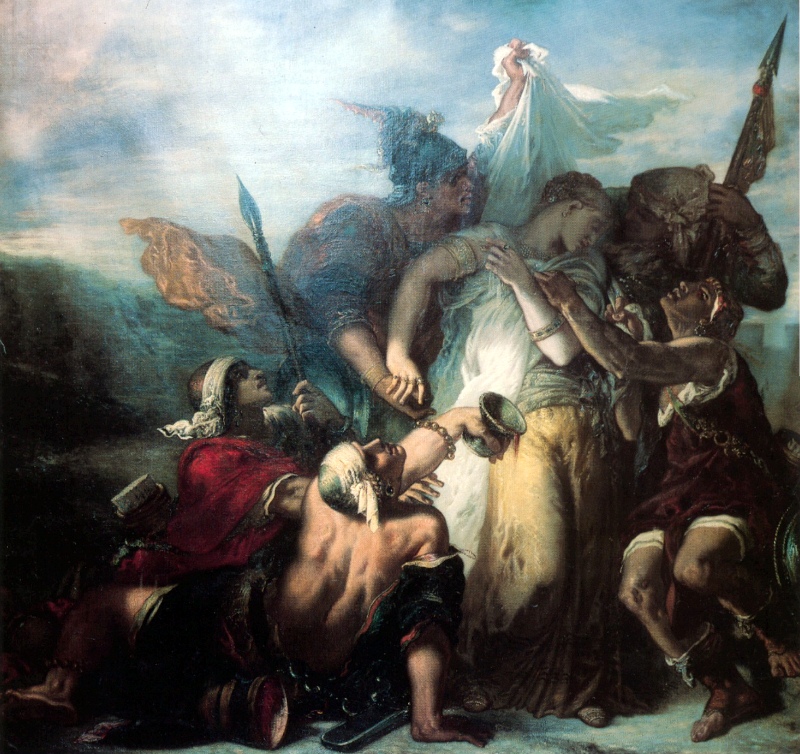Detail of a Calendar page for December, with a bas-de-page scene of men sledging and warming themselves by a fire, from the Golf Book (Book of Hours, Use of Rome), workshop of Simon Bening, Netherlands (Bruges), circa 1540, Additional MS 24098, f. 30r. © British Library. Source: Pinterest.
Tandry Whigs are soft buns served on Saint Andrew’s Day on 30 November. The modern version has Mediaeval roots. Here is a recipe.
The word Wig or Whig probably stems from Old Norse and means ‘soft’; thus, Wigs or Whigs (modern Norse/Danish:
Vegger). Originally, it meant buns made of wheat, as opposed to rye or barley.
According to very early murals in Denmark, they were perhaps originally formed as Crosses. Later, they became buns softened with eggs and butter or lard. Because of the soft dough, they often had an oval or trapezoid form. As anyone knows, who is used to working with dough made of wheat, water yeast, it is best to mix it to a structure akin to porridge and then let it stand around for a day or a day and a half. The the dough may be spilled onto a floured surface and gently cut into buns, which, as often as not, end up looking like Whigs or Verger, oblong soft buns.
According to some reports “Tandry", "Tandra" or "Tandrew” cakes, or Whigs, were enjoyed on The Feast Day of Saint Andrew (30 November).
In the
18th-Century, Tandry (Tandra) cakes turned into a kind of slightly-sweetened bun, made of a plain dough of flour, eggs, sugar, butter and water mixed with yeast. To this, was added currants and lemon peel.
Saint Andrew's Day was also a Traditional day for squirrel hunting. After the animals had been pelted, they were probably stewed with onions, roots, apples and thyme.
"The Last Supper" in Belling Church, Denmark. The mural, from 1496, shows a table spread with the two common types of daily bread marketed in Late-Mediaeval Denmark – the oblong ‘Vegger’ (wheat) and the three-cornered ‘Skonrogger’ (sifted rye). © Hans A. Mosbach.
RECIPE.
Sourdough-starter.Half a litre of water is mixed with 10 gr of fresh yeast, and as much flour as it takes to make mixture like a thick porridge. It gets tastier if half the flour is whole-grain, but, in The Middle Ages, people would have wished to get it as sifted and soft as that which was served at Court. Cover it with a cloth and let it stand in a warm kitchen for a day and a night.
Dough.Mix the Sourdough with a litre of water and
circa 1,5 kilos of flour. (For the healthy, but non-Mediaeval version, 1/3 whole grain and 2/3 normal flour). To this should be added 7 tsp. salt.
Work the wet and sticky mixture slowly with your hands, then let it stand around for a bit. Keep coming back during the next two hours and repeat the procedure with wet hands, until it is less sticky. Cover the bowl with a cloth or a wrap and keep it cool until evening.
Heat up the oven, including the baking-tray to 230 – 250 C. Gently toss the dough out onto a floured table or surface and fold it carefully once, until it forms an oblong mass. Now it should be possible to cut the Whigs by using a floured dough-cutter.
Place them on a baking sheet. When the oven is warm, place or drag the baking sheet onto the hot baking-tray. Give them ten minutes, until brown, and then another five minutes at 200 C.
Serve them with stew, made from rabbit, hare or squirrel, cooked with roots and herbs in a mixture of apple-juice and broth.




























